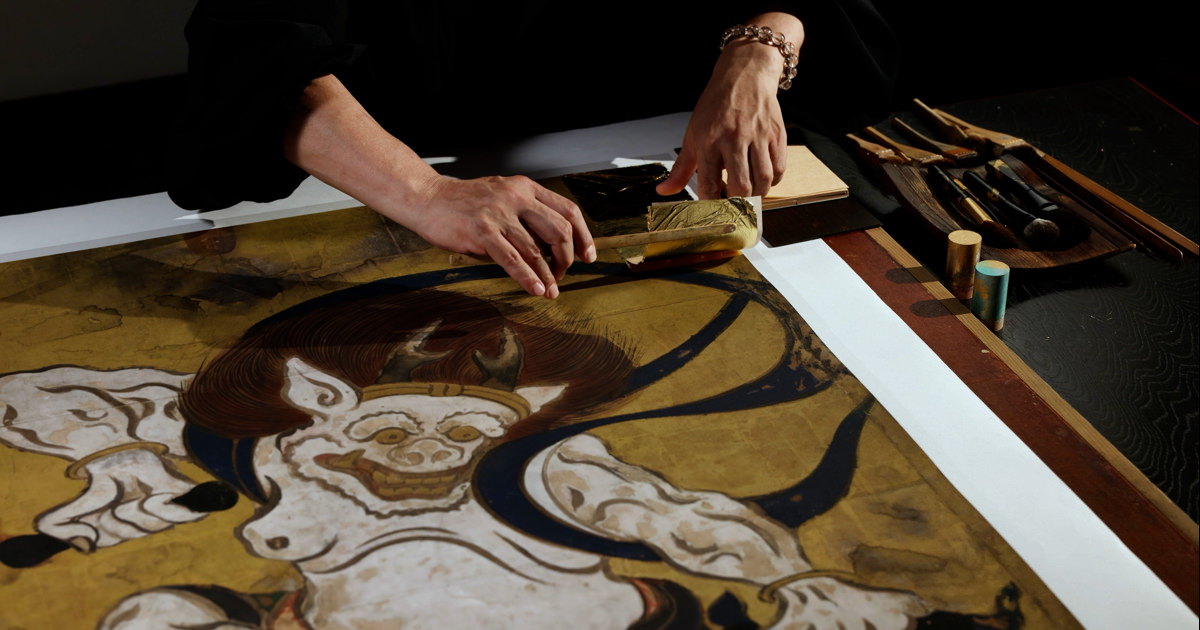Arrival of the Southern Barbarians
High-resolution facsimiles
- Material
- printed, gold on washi paper
- Period of creation
- Tsuzuri Project Stage 17 2024–2025
- Recipient
- Nagasaki Prefecture
Original
- Historical era
- Momoyama (Eary 17th Century)
- Material
- Ink, color, and gold on paper
- Medium
- Pair of six-fold screens
- Size
- Each screen H146.7 × W337.2 cm
- Collection
- Cleveland Museum of Art
Description
Nanban, or ""Southern Barbarians"", screens, created from the late 16th to the early 17th century, depict the foreign people and cultures that arrived from Europe, particularly the Portuguese. The term Nanban comes from the fact that the people came across the ocean from the south, and had manners and customs considered unusual in Japan.
In this work, the left screen shows the arrival of a Portuguese ship and the unloading of trade goods, while the right screen depicts a procession of foreigners heading to a Christian monastery, observed with great interest by the Japanese. Compared to other Nanban screens, this work stands out for its diverse representation of figures and the dramatic expression of the waves.
This pair of screens was once a treasured possession of Nagami Tokutaro (1890–1950), a wealthy merchant from Nagasaki and a well-known collector of Nanban art. However, it is believed to have been sold around 1934. After a tumultuous journey, the screens eventually crossed the sea and are now housed in the Cleveland Museum of Art.




